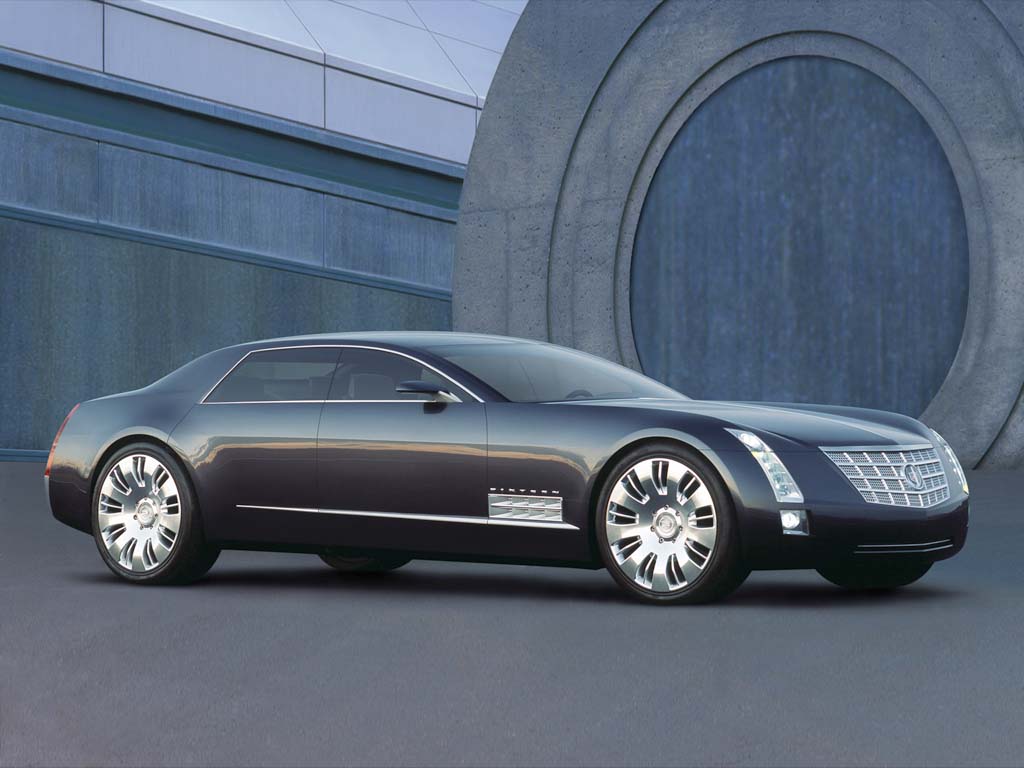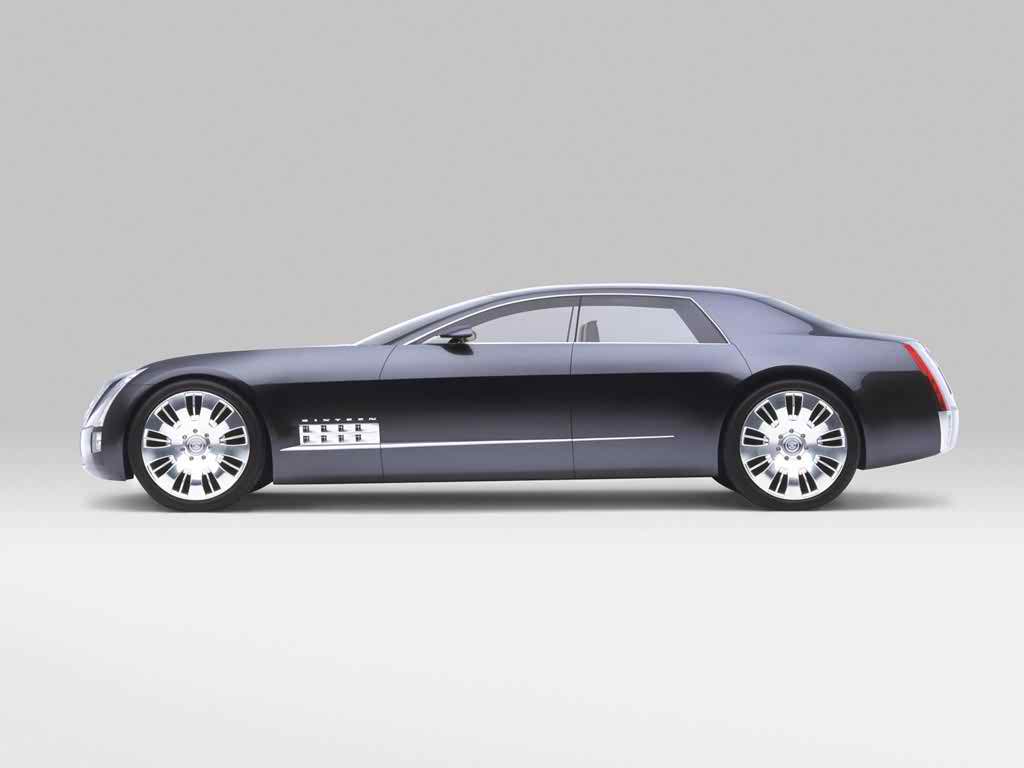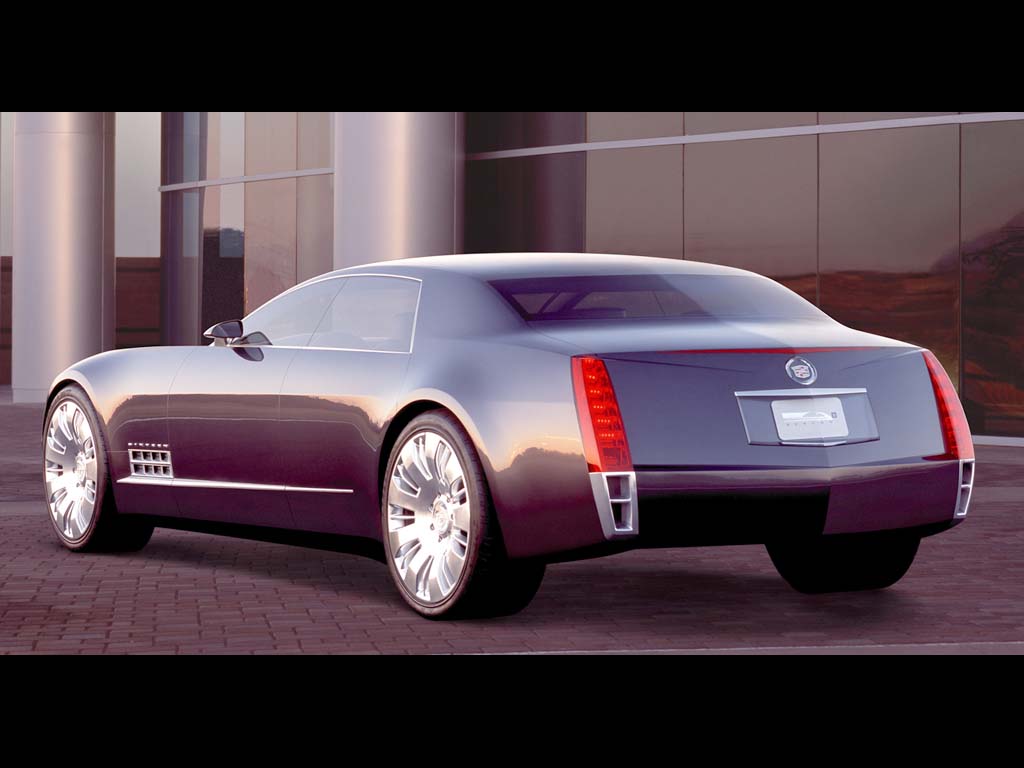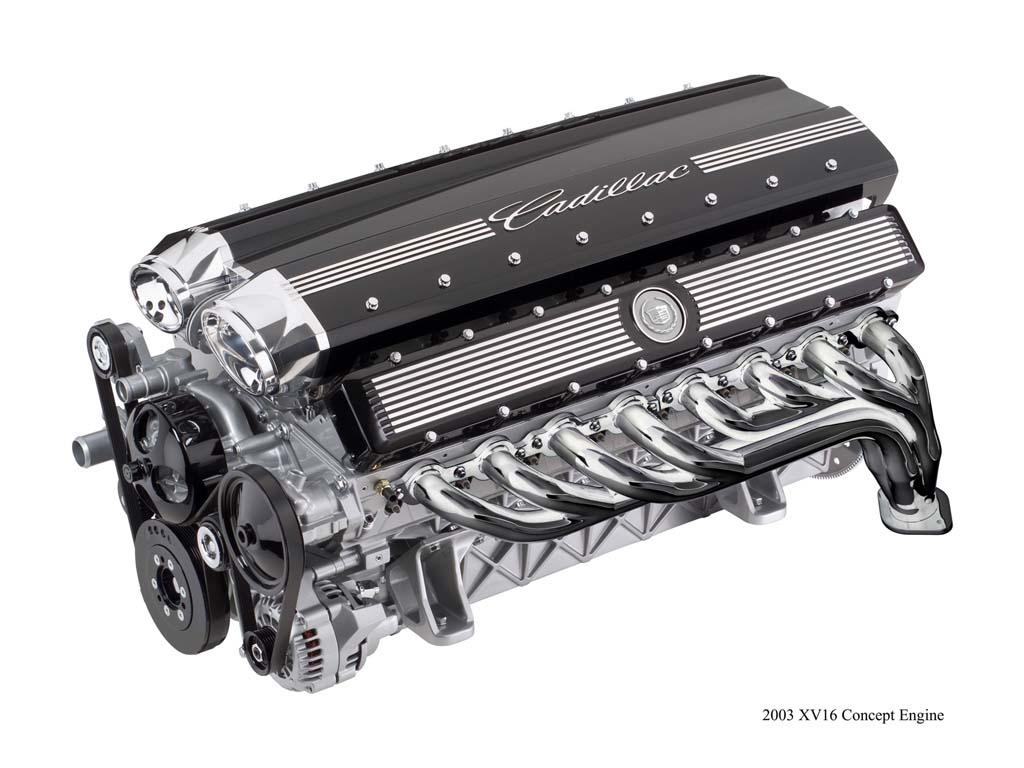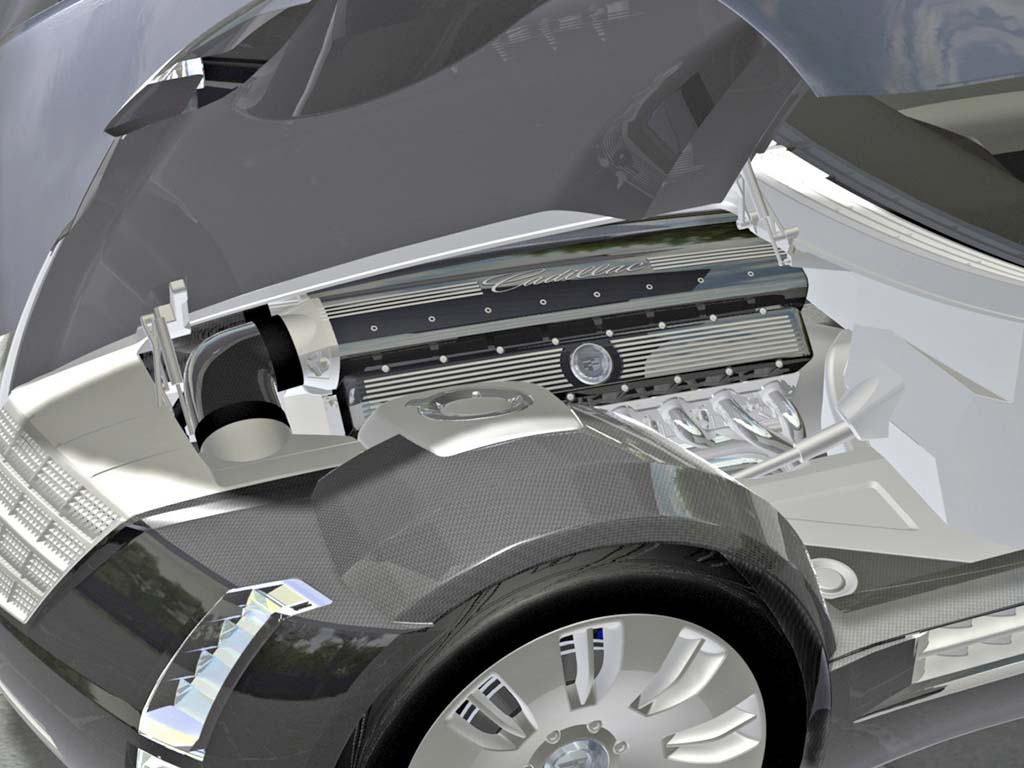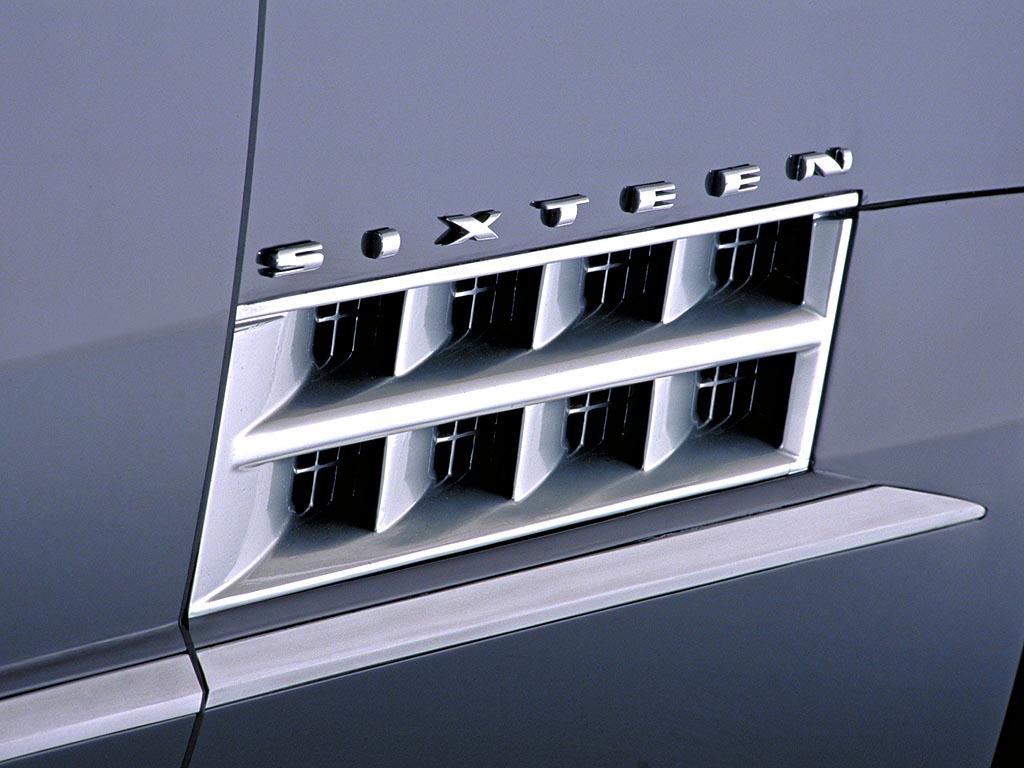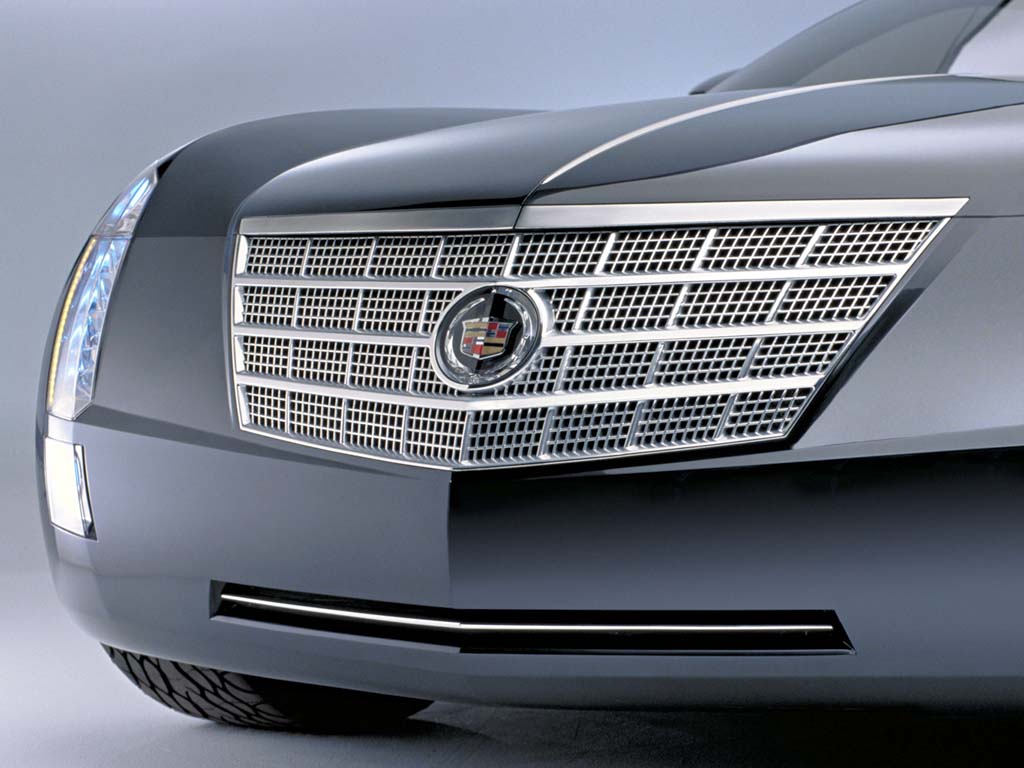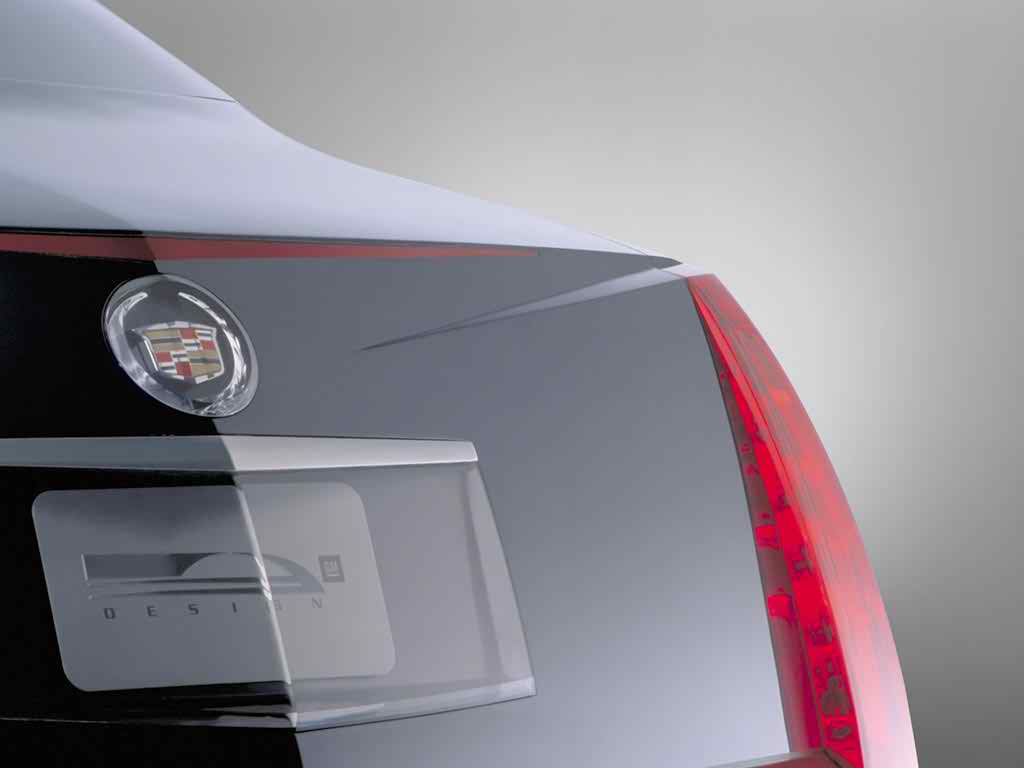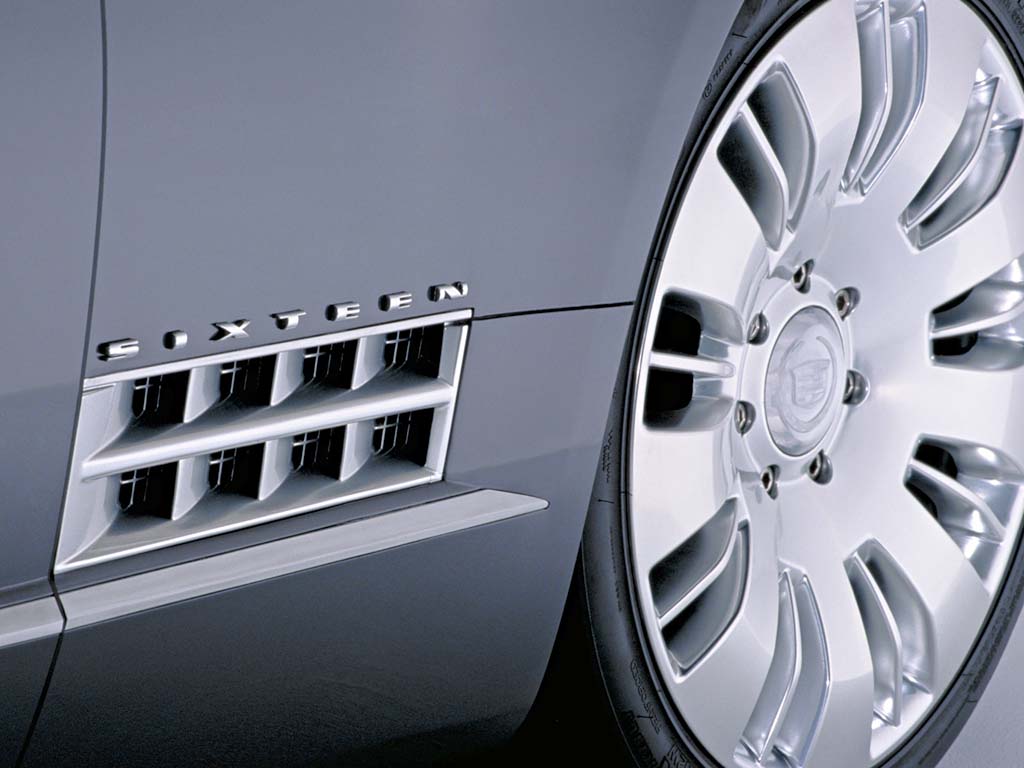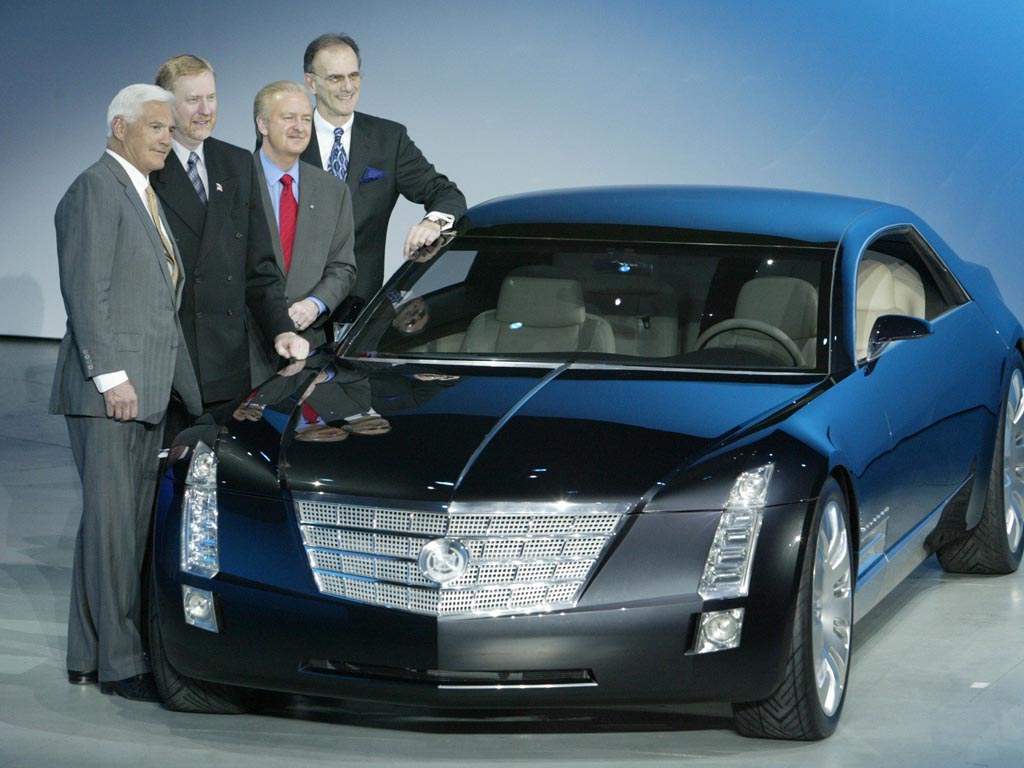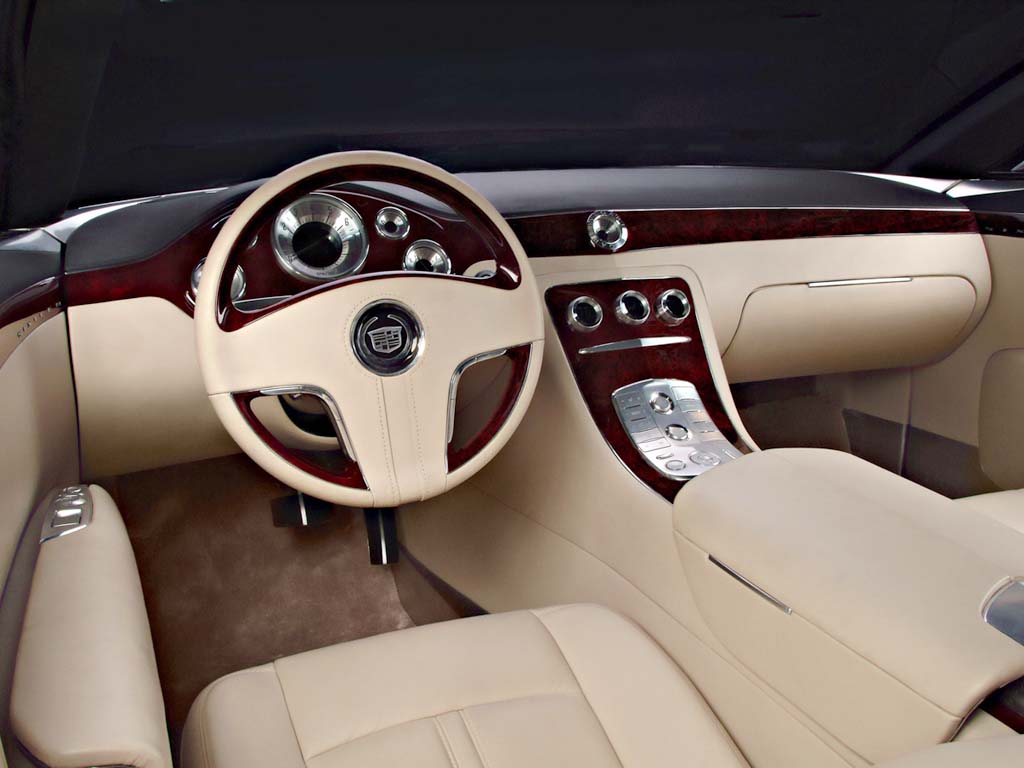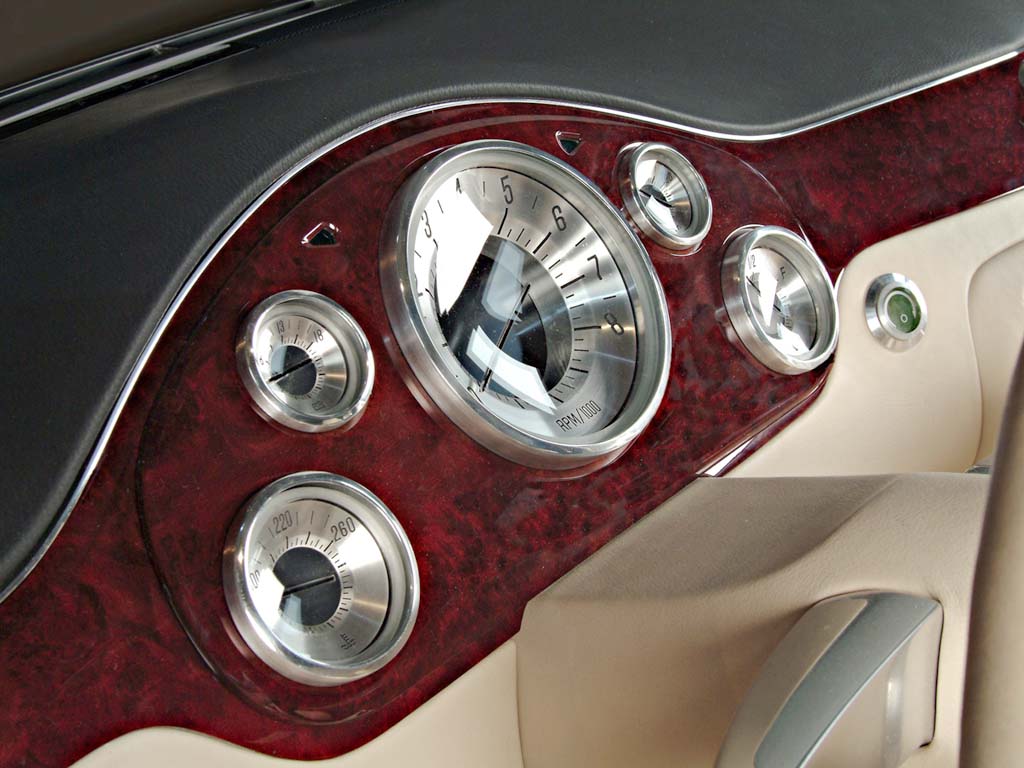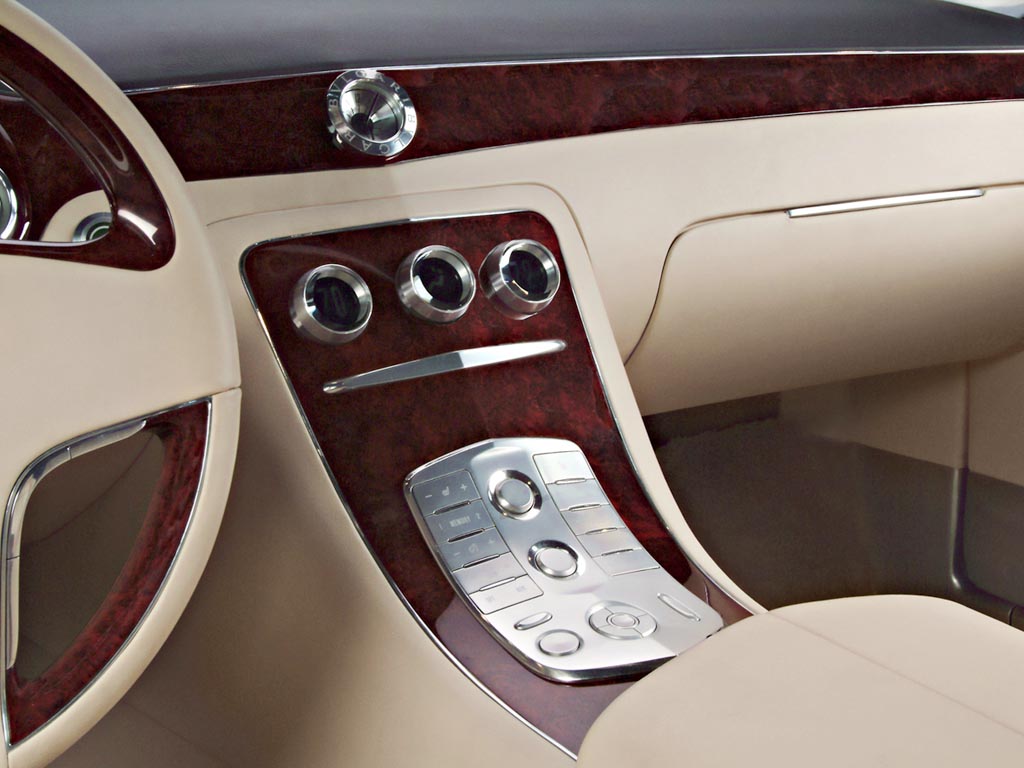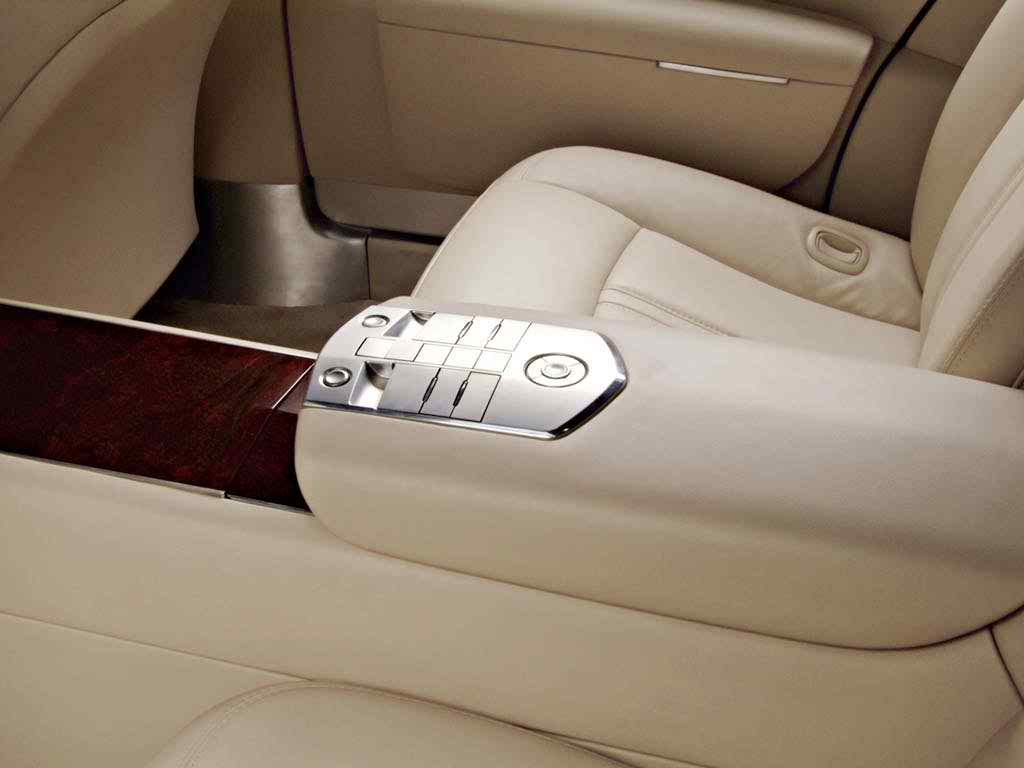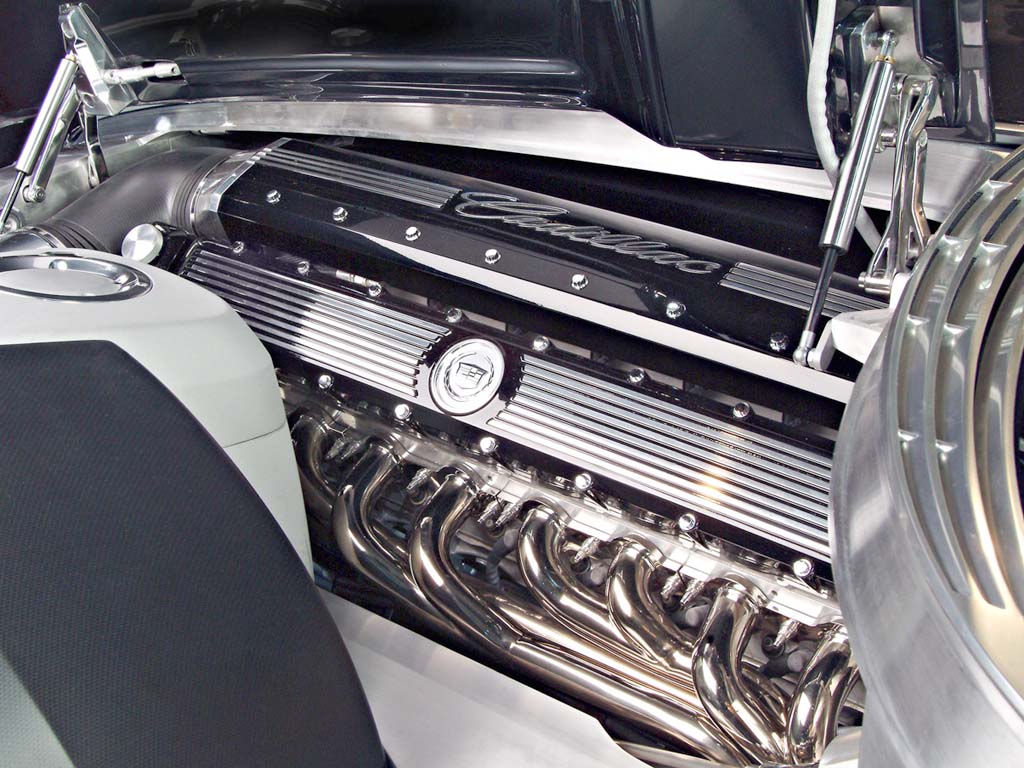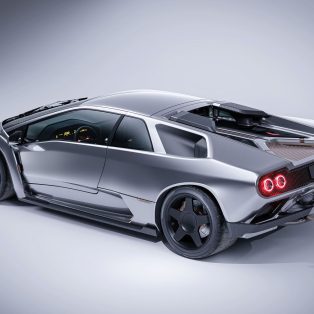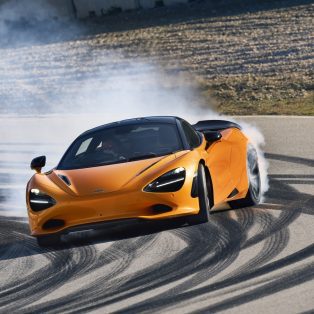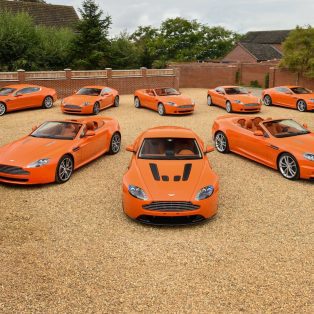2003 Cadillac Sixteen Concept
Built for the 2003 Detroit Auto Show, the Cadillac Sixteen was a concept car that payed hommage to the V16 cars of Cadillac’s past. It was built as a functioning prototype by Special Projects Inc in Michigan with a prototype V16 engine by Katech Inc. The chassis was custom fabriacted from welded aluminum and was design uniquely for this car.
Inside and out the Sixteen was a design concept so functionality in areas like the instrumentation was lost. Furthermore, all the necessary systems were fitted in the trunk including a real fuel gauge, fuel filler and all the electronics. Due to the experimental nature of the car, an electronically imposed 40 mph was the top speed.
A clay mockup was also made prior to Special Projects fabrication.
Press Release
The Cadillac Sixteen is classic automotive seduction with the panache of Cadillac’s ultramodern design.
In form, power and opulence, the 2003 Cadillac Sixteen embodies the timeless qualities of an exceptionally luxurious super-sedan with its sleek, gemstone appearance. The rear-wheel-drive Cadillac Sixteen brings forth the exclusivity and grandeur of the custom-built Fleetwood coach cars of the 1930s for today’s generation of exceedingly well-heeled customers of discerning taste.
V-16
The name speaks to the car’s powerful 16-cylinder, 1000-horsepower engine and Cadillac’s heritage as a maker of fine luxury automobiles. Cadillac’s reputation grew exponentially during the ’30s in no small part because of the development of the automotive industry’s first V-16. The Cadillac Sixteen’s grand exterior proportions create an unparalleled presence; its splendid interior is meticulously handcrafted and urbane.
General Motors’ designers drew extensively on the traditions of the coachbuilt era in crafting the Cadillac Sixteen, employing the distinctive talents of leading artisans for the upholstery, instrumentation, interior wood and metal elements, and aluminum body panels.
As an exterior statement, the Cadillac Sixteen’s proportional composition is bold. The aluminum hood is long, giving the Cadillac Sixteen tremendous dash-to-axle dimension; the wheel arches were designed to accommodate the beautiful 24-inch polished aluminum wheels. The four-door hardtop incorporates an all-glass roof and is without B-pillars. Crisp-edged lines of the midnight silver aluminum body panels accentuate the Cadillac Sixteen’s striking appearance.
Even the engine compartment, with its sculpted design, has drama. With dual panels hinged about a center spine that runs the length of the expansive hood, it makes an event out of opening the engine bay. The hood panels are power-operated.
Warm luxury
The interior theme is evocative of the posh accommodations of 1930s-era Cadillacs, but with contemporary style. For instance, the dashboard features a center-mounted Bvlgari clock.
The hand-stitched, Tuscany leather upholstered seats nestle the occupants. The right rear seat features power adjustable slope to recline like a chaise lounge. Warm, hand-woven silk carpets the floor in a light cream color that matches the leather upholstery. The dash, door panels, and front and rear consoles are trimmed with walnut burl veneer inlays.
Meanwhile, the custom-designed crystal on the cluster dials offers subtle cues of the Cadillac Sixteen’s precise engineering, elegance and craftsmanship.
One thousand horses
While GM designers drew inspiration from the ultra-luxury sedan’s ancestry, the Cadillac Sixteen is thoroughly modern in its powerplant and technological content.
The Cadillac Sixteen’s 32-valve V-16 concept engine displaces 13.6 liters and is mated to a four-speed electronically controlled automatic transmission. The engine features fuel-saving Displacement on Demand technology, debuting in 2004 on some 2005 GM models, which shuts down half of the cylinders during most driving conditions and automatically and seamlessly reactivates them for more demanding conditions, such as brisk acceleration or load hauling cylinders when the driver needs the engine’s full power. The engine produces 1000 horsepower and 1000 lbs.-ft. of torque.
The extensive use of aluminum components and structure provide substantial weight advantages. The aluminum-steel chassis employs high-arm SLA suspension up front and independent semi-trailing arm suspension in the rear. Four-wheel steering enhances the Cadillac Sixteen’s maneuverability. The front and rear brakes are six-piston calipers with 16-inch rotors.
Electronic amenities include a rear-seat DVD information system, Bose sound system, and the fifth-generation OnStar in-vehicle safety and security communication system. The head and tail lamps feature LED technology.
2003 Cadillac Sixteen Concept Gallery
See full 2003 Cadillac Sixteen Concept Image Gallery
In Detail
| type | Concept / Prototype Car |
| built at | Plymouth, Michigan, USA |
| body stylist | Brian Smith |
| coachbuilder | Special Projects Inc |
| production | 1 |
| engine | V16 |
| position | Front Longitudinal |
| aspiration | Natural |
| displacement | 13600 cc / 829.9 in³ |
| engine designer | Katech Inc. |
| redline | 5000 |
| body / frame | Aluminum Body over Aluminum Chassis |
| driven wheels | RWD |
| curb weight | 2270 kg / 5000 lbs |
| transmission | 4-Speed Auto |
| top speed | ~64.36 kph / 40 mph |





